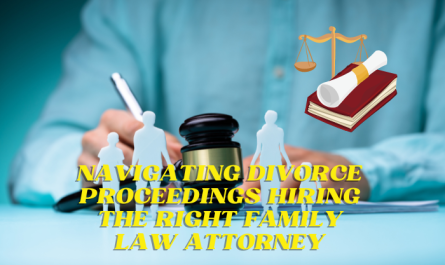Navigating bankruptcy can feel like walking a tightrope. You’re balancing on the edge, with your financial future hanging in the balance. This guide to bankruptcy law will provide you with the knowledge and tools to protect your assets legally, ensuring you make informed decisions every step of the way.
Understanding Bankruptcy: A Quick Overview
Bankruptcy often conjures images of financial ruin, but it’s actually a legal mechanism designed to offer individuals and businesses a fresh start. It provides relief from overwhelming debts, either by liquidating assets to pay off creditors or by creating a manageable repayment plan.
Two main types of bankruptcy filings are relevant to most individuals: Chapter 7 and Chapter 13. Chapter 7 involves the liquidation of assets to discharge debts, while Chapter 13 allows debtors to keep their assets but requires them to follow a court-approved repayment plan over three to five years.
Choosing the Right Bankruptcy Option
Deciding which type of bankruptcy to file for depends on several factors, including the nature of your debts, your income, and your long-term financial goals. People with significant unsecured debts, such as credit card balances and medical bills, and little disposable income frequently favor Chapter 7. On the other hand, Chapter 13 might be the better option for those with a steady income who wish to keep their property, such as a home or a car, while repaying their debts over time.
Consulting with a bankruptcy attorney is crucial in making this decision. An attorney can evaluate your financial situation, explain your options, and help you choose the path that best aligns with your needs and goals.
Exemptions: What Assets Can You Keep?
One of the most common concerns when considering bankruptcy is the fear of losing everything. The good news is that bankruptcy laws include exemptions—protections that allow you to keep certain assets. Exemptions vary by state, but they often cover essentials like your primary residence, a modest vehicle, personal belongings, and tools of your trade.
For example, the homestead exemption can protect a portion, or even all, of your home’s equity from creditors, depending on your state’s laws. Similarly, retirement accounts like 401(k)s and IRAs are typically shielded from bankruptcy, meaning your future remains secure even if your current financial situation is dire.
The Bankruptcy Process: What to Expect
Filing for bankruptcy is a structured process that requires careful attention to detail. It begins with gathering and organizing your financial documents, including income statements, tax returns, and a comprehensive list of your assets and liabilities.
Once your paperwork is in order, the next step is to file a petition with the bankruptcy court. This petition must include detailed information about your financial situation, and you must also complete credit counseling from an approved agency. After filing, an automatic stay goes into effect, halting most collection actions against you, including wage garnishments, foreclosures, and lawsuits.
The court will then assign a trustee to oversee your case. In Chapter 7, the trustee’s role includes liquidating non-exempt assets and distributing the proceeds to creditors. In Chapter 13, the trustee reviews your proposed repayment plan and ensures that it complies with the law.
Secured vs. Unsecured Debts: Understanding the Differences
A critical aspect of bankruptcy law is the distinction between secured and unsecured debts. Collateral, or something of value that the creditor may take if you default on the loan, backs secured debts. Mortgages and car loans are common examples of secured debts.
Unsecured debts, on the other hand, have no collateral backing them. Credit card debt, medical bills, and personal loans fall into this category. In Chapter 7 bankruptcy, unsecured debts are often discharged entirely, meaning you are no longer legally obligated to repay them. However, secured debts may require surrendering the collateral or continuing to make payments if you wish to keep the asset.
The Role of Creditors in Bankruptcy Proceedings
Creditors play a significant role in bankruptcy proceedings, as they are the ones seeking repayment of debts. When you file for bankruptcy, creditors are notified and have the opportunity to file claims for what they are owed. In some cases, they may challenge the discharge of certain debts, arguing that they should be excluded from the bankruptcy process.
For example, debts incurred through fraud or intentional wrongdoing are often non-dischargeable, meaning you must continue to repay them even after bankruptcy. Additionally, certain debts like child support, alimony, and most student loans are typically not dischargeable in bankruptcy.
Rebuilding Credit After Bankruptcy
Bankruptcy has a significant impact on your credit score, but it doesn’t mean the end of your financial life. Rebuilding credit post-bankruptcy is not only possible, but it’s essential for regaining your financial footing.
One of the first steps to rebuilding credit is to create a budget and stick to it. Demonstrating responsible financial behavior is key to restoring your creditworthiness. Secured credit cards, which require a deposit, can be a useful tool in rebuilding credit, as they report to credit bureaus just like traditional credit cards.
Over time, you may also want to consider applying for a small personal loan or a credit-building loan, which are specifically designed to help individuals with poor credit scores.
Common Myths About Bankruptcy
Many misconceptions surround bankruptcy, often deterring individuals from considering it as an option. One common myth is that bankruptcy means losing everything you own. As discussed earlier, exemptions allow you to keep essential assets, and in many cases, individuals retain more than they expect.
Another myth is that bankruptcy will permanently ruin your credit. While bankruptcy does impact your credit, the effects are not permanent. With diligent effort, you can rebuild your credit and achieve a healthy financial standing within a few years.
Life After Bankruptcy: A Fresh Start
Bankruptcy represents not just an end but a beginning. It provides the opportunity to wipe the slate clean and start anew, free from the burden of unmanageable debt. With a fresh start comes the chance to build a more secure financial future, equipped with the lessons learned from past mistakes.
Taking control of your financial life after bankruptcy involves setting clear goals, creating a realistic budget, and committing to saving and investing for the future. It’s also wise to seek out financial education and counseling to help guide your decisions moving forward.
FAQs
What is the difference between Chapter 7 and Chapter 13 bankruptcy?
Chapter 7 bankruptcy involves liquidating assets to pay off debts, often leading to the discharge of unsecured debts. Chapter 13 allows you to keep your assets while repaying debts over a 3-5 year period under a court-approved plan.
Can I keep my house if I file for bankruptcy?
It depends on the type of bankruptcy and the amount of equity in your home. The homestead exemption may protect your home’s equity in a Chapter 7 filing, while Chapter 13 allows you to keep your home if you adhere to the repayment plan.
Will all my debts be discharged in bankruptcy?
Not all debts can be discharged. Certain debts, like child support, alimony, most student loans, and debts incurred through fraud, are generally non-dischargeable.
How long will bankruptcy stay on my credit report?
Chapter 7 bankruptcy can remain on your credit report for up to 10 years, while Chapter 13 stays for up to 7 years. However, the impact on your credit score diminishes over time.
Can creditors still contact me after I file for bankruptcy?
Once you file for bankruptcy, an automatic stay goes into effect, halting most collection actions, including calls, letters, and legal proceedings from creditors.
Is it possible to rebuild credit after bankruptcy?
Yes, it is possible to rebuild credit after bankruptcy. Start by creating a budget, using secured credit cards, and making on-time payments to demonstrate financial responsibility.




Thanks for sharing excellent informations. Your web-site is so cool. I’m impressed by the details that you have on this web site. It reveals how nicely you perceive this subject. Bookmarked this website page, will come back for extra articles. You, my pal, ROCK! I found simply the information I already searched all over the place and just couldn’t come across. What an ideal website.
br6py1
These new three antigens, together with the known HLA B 35, allow confirmation of a genetic predisposition in almost all patients with SAT buy priligy online Unlove pfBLfgnDwCKWwRl 6 19 2022